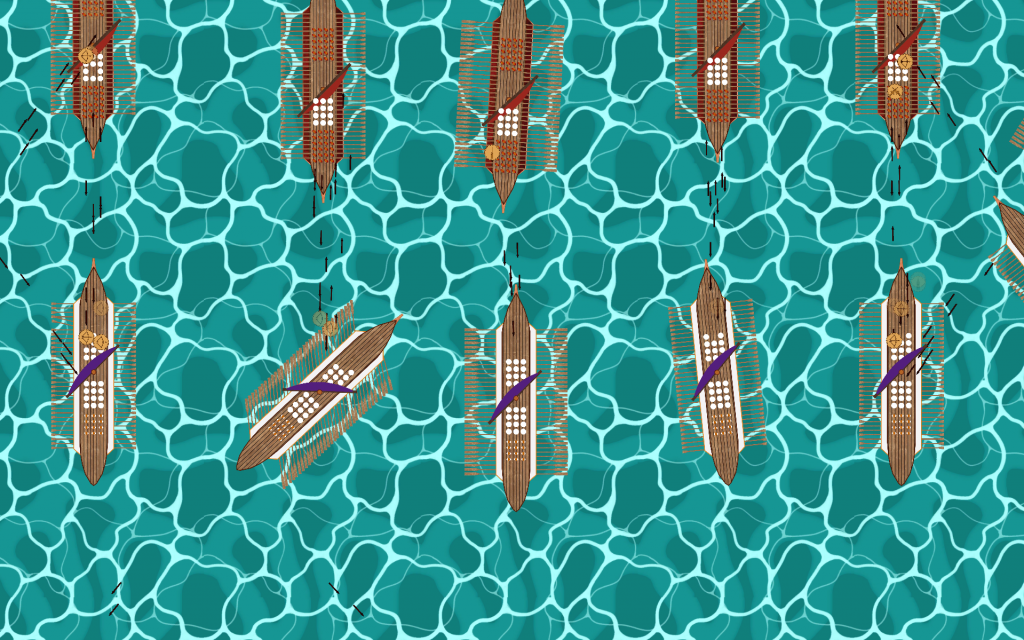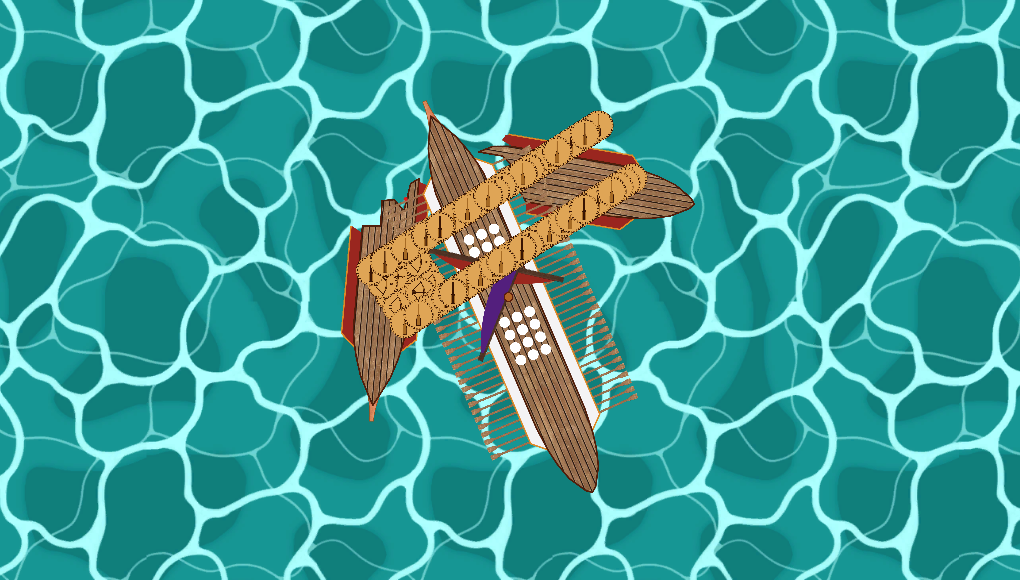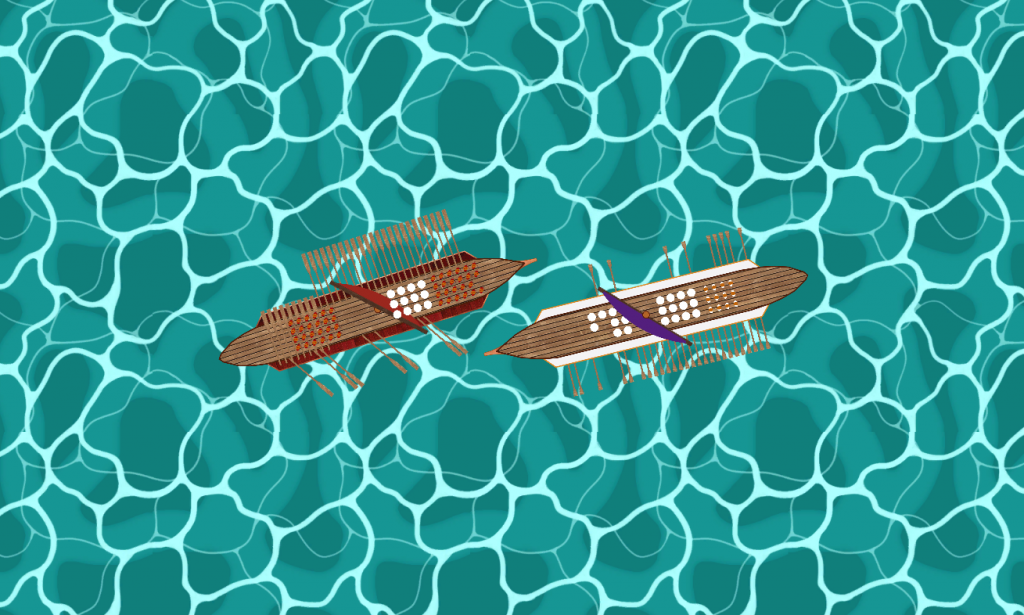Ramming speed is a side project I did in my free time.
I developed the core gameplay in about two weeks and worked on and off the project since then.

Gameplay
The player controls a single rowing ship. It can row forward, backward, and turn around its z-axis.
The general goal is to destroy enemy ships. This is mainly achieved by utilizing the ram, mounted on the ship’s bow. If a ram is moved into a ship’s hull at sufficient speed, the ship will break apart.

The ideal angle for a ramming attack is 90 degrees to the enemy ship. If the angle is too low, the ship will stay intact but might suffer a leak. Ships with leaks will slowly gain water, reducing their speed. If too much water is amassed, the ship will sink.
Oars
Oars can break on rocks or the hulls of other ships. When a ship loses oars its speed is reduced. When one side has more oars than the opposite one, the ship will tilt in the direction with fewer oars, when moving forward or backward. The player can exploit this by deliberately breaking off the enemies’ oars to reduce their maneuverability.

The oars can also be retracted by holding down the F key. This can be done to avoid breaking them. When timed correctly, the player can slide along the side of an enemy ship and retract his oars just before he makes contact. This will cause the enemy oars to break but keep the player’s own intact.

When retracted, the oars can be pushed out to repel the ship away from an obstacle. This can be used to gain distance from an enemy.

Broken oars can be replaced by pressing E. When the replacement oars run out, no more broken oars can be replaced. The player can pick up new replacement oars, from destroyed ships.
Pressing W or S while the oars are retracted, will result in the oars being pushed in a staggered arrangement, either from the bow or the stern. This is useful when standing next to an obstacle, that would break some oars if all of them were pushed out simultaneously. With the staggered approach, the front oars can begin to move and bring the ship out of harm’s way, before the rear oars get exposed.
